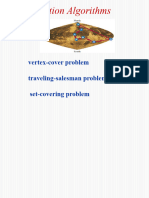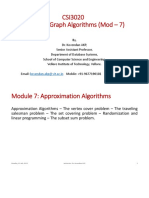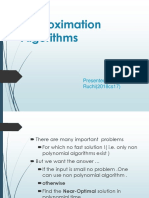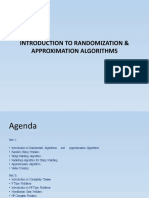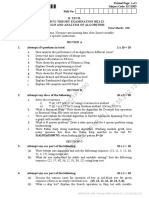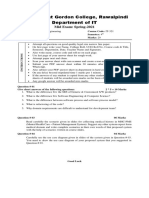0% found this document useful (0 votes)
27 views13 pagesLecture 35 Aproximation Algorithms
This document discusses approximation algorithms for optimization problems that are NP-complete. It provides examples of approximation algorithms for the vertex cover problem and the traveling salesman problem (TSP). For vertex cover, the algorithm adds vertices to the cover when processing each edge until all edges are covered. For TSP, it computes a minimum spanning tree and uses a preorder tree walk to generate a Hamiltonian cycle, taking advantage of the triangle inequality. Approximation algorithms provide efficient solutions that are close to optimal rather than finding exact optimal solutions.
Uploaded by
Ritik chaudharyCopyright
© © All Rights Reserved
We take content rights seriously. If you suspect this is your content, claim it here.
Available Formats
Download as PPTX, PDF, TXT or read online on Scribd
0% found this document useful (0 votes)
27 views13 pagesLecture 35 Aproximation Algorithms
This document discusses approximation algorithms for optimization problems that are NP-complete. It provides examples of approximation algorithms for the vertex cover problem and the traveling salesman problem (TSP). For vertex cover, the algorithm adds vertices to the cover when processing each edge until all edges are covered. For TSP, it computes a minimum spanning tree and uses a preorder tree walk to generate a Hamiltonian cycle, taking advantage of the triangle inequality. Approximation algorithms provide efficient solutions that are close to optimal rather than finding exact optimal solutions.
Uploaded by
Ritik chaudharyCopyright
© © All Rights Reserved
We take content rights seriously. If you suspect this is your content, claim it here.
Available Formats
Download as PPTX, PDF, TXT or read online on Scribd
/ 13






